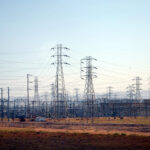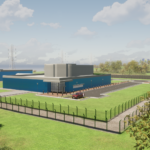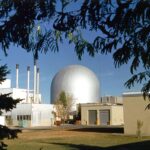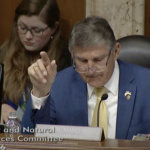Cutting power: How creative measures can end the EU’s dependence on Russian nuclear fuel
By Marina Lorenzini | May 3, 2023
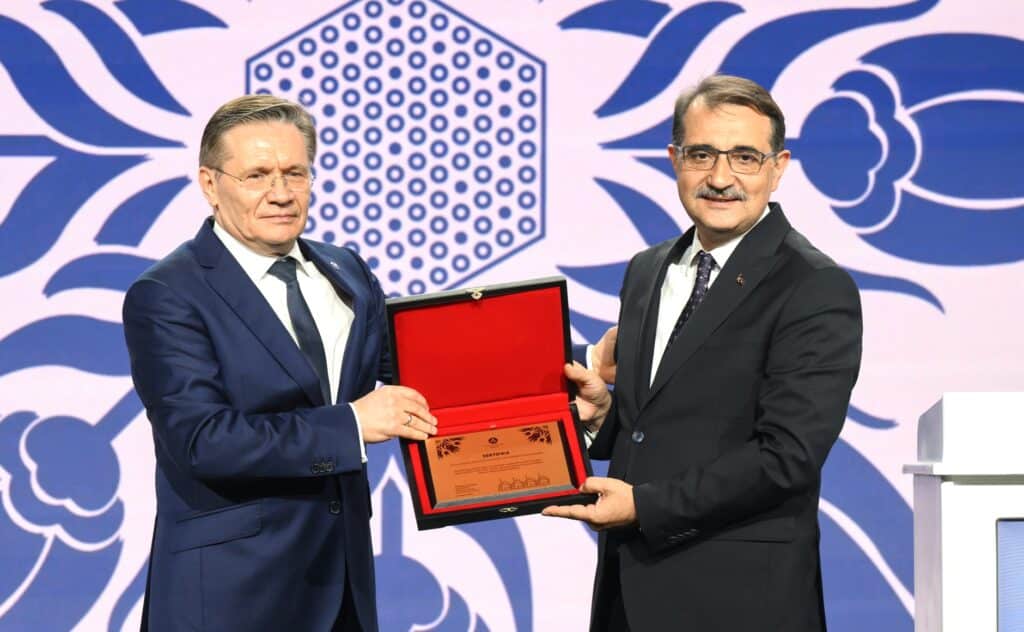
In the past year, Ukrainian President Volodymyr Zelensky has repeatedly called for sanctions on Russia’s nuclear industry and nuclear fuel exports. Ahead of the European Union’s 10th sanctions package, Zelensky tweeted a call to specifically designate Rosatom—Russia's state-controlled nuclear energy company—and its subsidiaries. EU parliament members also adopted a resolution calling “for the sanctioning of companies such as Lukoil and Rosatom, which are still present on the EU market” and “an immediate and full embargo on EU imports of fossil fuels and uranium from Russia.” Despite a strong push by several EU countries, the package did not include Rosatom on the list of sanctioned Russian organizations.
Rosatom has had a terrible record in Ukraine, including the annexation and illegal occupation of the Zaporizhzhia nuclear power plant in southeastern Ukraine. The United Kingdom and the United States have applied some sanctions on Rosatom-connected entities, targeting members of company leadership, the sham Zaporizhzhia joint-stock company, and some Russian nuclear research centers. But several European countries are dependent—some entirely—on Rosatom’s products to support their nuclear power plants and energy security profiles. Some European utilities have demonstrated great urgency to develop alternative suppliers to Rosatom, the Russian global company that has largely maintained its dealings in nuclear fuel and construction of new reactors across the European market.
As the 11th sanctions package is underway in Brussels, prospects for a wholesale sanction of Rosatom remain dim due to numerous interconnections as well as the technical and financial aspects of substitution of Russian products. The experience of five EU countries (Bulgaria, Czech Republic, Finland, Hungary, and Slovakia) can provide key insights on options—and vulnerabilities—of sanctions and ongoing efforts to diversify away from the Russian nuclear industry.
Russian nuclear fuel industry. The stages of nuclear fuel production (roughly, uranium mining, conversion, enrichment, and fuel fabrication) provide their own set of vulnerabilities in the prospects of sanctioning Rosatom and its subsidiaries.
According to the World Nuclear Association, in 2019, the total global enrichment requirements (excluding Russia’s domestic reactor fleet) are about 48 million separative work units (SWU, the unit for measuring enrichment work) each year, against a total non-Russian enrichment capacity (including China, France, and British-German-Dutch Urenco group) sits at about 33 million SWU per year. Cutting off Russia’s enrichment exports would therefore leave nearly 30 percent of the global demand unsatisfied, although it would not directly affect electricity production as utilities typically keep some buffer stocks worth about three years of uranium requirements.
In 2020, three countries produced over two thirds of the world’s uranium ore: Kazakhstan (41 percent), Australia (13 percent), and Canada (eight percent), with Russia being only a marginal producer. For its part, Cameco—the Canadian world’s second-largest uranium supplier—announced before Russia’s invasion that its mines will return to two-thirds of their production capacity starting 2024—corresponding to about 11,000 tons per year, more than EU imports of uranium from Russia. This development could replace Russia’s current output.
Russia’s more critical involvement in uranium ore is as a key transportation country for Kazakhstan’s uranium ore. Since Russia’s invasion of Ukraine, Kazakhstan has been further developing an alternative corridor through the trans-Caspian international transport route. Kazakhstan’s national uranium operator, Kazatomprom, has used this route to deliver its products since 2018. In April, Kazatomprom announced the delivery of uranium concentrates to Romania via the route. The company is currently working to resolve some regulatory aspects in order to expand trans-Caspian route operations. Once accomplished, this route could serve as an alternative delivery mechanism for EU utilities.
In the current global market, uranium conversion is, along with uranium enrichment, one of the tightest stages in nuclear fuel production. Russia’s Tenex—a subsidiary of Rosatom—controls over one third of the world’s uranium conversion, the other producers being Canada, China, and France. A large US plant in Illinois, ConverDyn, which has been shut down since 2017—is scheduled to incrementally reopen this year, possibly at its design capacity of 15,000 tons per year. Together, Canadian, French, and US conversion capacity could reach about 34,500 tons per year in 2023—more than current US and EU requirements combined.
Russia’s Tenex also controls nearly half of the world’s uranium enrichment capacity. This happened because, as Princeton researchers Dory Castillo-Peters and Frank von Hippel explain, the European companies Urenco and Orano let their enrichment capacities gradually decline by not replacing broken centrifuges. But, under proper investment incentives, Urenco and Orano may restart centrifuge production and increase their enrichment capacity.
As for nuclear fuel fabrication, the industry’s tradition has been to match producers to reactor designs. Logically, TVEL—Rosatom’s subsidiary for nuclear fuel—has been the preferred fuel fabricator for Soviet-era and Russian reactors. Even though technical and regulatory adaptations make substitution possible, European utilities have so far encountered many challenges to implement such adaptations. Moreover, both US and French utilities— Westinghouse and Framatome, respectively—rely partly on Tenex products for their own fuel fabrication. Thus, even as Westinghouse and Framatome sprint to fulfill fuel fabrication demand for Russian-designed VVER reactors in Europe, the fuel assemblies include converted and enriched uranium with a history in Russia.
Quest for alternative fuel suppliers. In the past year, Bulgaria, the Czech Republic, and Slovakia have pivoted to sign agreements with new suppliers for fuel fabrication. TVEL reported global export revenue in 2022 at $1.18 billion. This figure pales in comparison to Russia’s revenue from oil exports in the month of December 2022 alone, which sat at $13.3 billion. Still, Russian nuclear fuel fabrication services have stood out as an area where US and French alternative supplies exist but require unique technical adaptations, testing, and licensing for each reactor.
Westinghouse and Framatome were building up their ability to compete with TVEL in supplying fabricated fuel for Russian-designed reactors prior to the invasion. But some countries saw little urgency to make a switch; TVEL was a reliable and economic option. Because TVEL is a state-owned company, it can undercut competitors to achieve market share, making Westinghouse and Framatome fuels almost always the more expensive options. Last year, Slovakia’s Economy Minister Richard Sulík said that Westinghouse’s latest offer was 20 percent higher than TVEL’s. It is unclear what the price differences may be for future deals. Another challenge concerns the costs associated with adapting reactors for the authorization of new fuel suppliers. But these costs would not necessarily be prohibitive, especially if utilities view diversity of supply as a vital interest to sustaining the continuous operation of their assets.
At the G7 Nuclear Energy Forum in April, Canada, France, Japan, the United Kingdom, and the United States announced their shared goals of supporting the stable supply of nuclear fuels for currently operating reactors and reduce the dependence on Russian supply chains. By this, the G7 countries seek to develop a favorable financial environment, harmonize regulatory practices to enable standardized fuel designs across countries, and increase nuclear supply chain capacity. Despite the political will, however, this strategy still lacks concrete instruments and timelines.
Nuclear power plant construction. In 2020, Rosatom’s overseas nuclear plant construction projects included 36 reactor units at various stages of implementation to the tune of roughly $90 billion in value. Over the past two decades, Rosatom’s offerings have expanded beyond the reactors themselves, under the customized and expanded build-own-operate model. In Bangladesh, Egypt, and Turkey, Russia, on behalf of Rosatom, was “willing to assume project risk that other nuclear vendors were not,” says Mark Hibbs, a senior associate in the Carnegie Endowment’s Nuclear Policy Program. “Russia’s liabilities for these projects include heavy financing, obligations to take back spent fuel, and of course the political risk in countries which have no track record of nuclear power generation and project management.”
Russia has not yet employed the build-own-operate model in the European Union. Still, Finland and Hungary serve as the EU’s closest case studies, providing divergent agreement formats and outcomes. Hungary is currently forging ahead with its intergovernmental agreement with Russia, whereas Fortum—a Finnish state-owned electricity company—cancelled the consortium to build a new site with Rosatom. Both countries are currently importing nuclear fuel from TVEL, Rosatom’s nuclear fuel subsidiary.
The examples of new reactor construction projects in Finland and Hungary illustrate the financial risks of canceling contracts with the Russian nuclear industry as well as the creditor’s durable political leverage, respectively. German, French, or US technologies may exist for construction, operation, and maintenance of nuclear reactors, but no country has stepped up with an effective replacement to Russian intergovernmental agreements and state-backed financing offers.
Sanctions prospects and limits. Removing the EU dependence on Russia’s nuclear energy technology won’t be easy—except maybe when it comes to uranium ore. At best, it would take at least several years for EU nuclear plants to substitute Russian fuel fabrication services with other suppliers. And it would take much longer to replace the critical supply chain components of uranium conversion and uranium enrichment. This makes the prospects of Brussels sanctioning Rosatom overall—and therefore all its activities—quite bleak.
Dealing a blow to the Russian nuclear portfolio would pale in comparison to revenues of its oil industry anyway. Moreover, Russia could take its nuclear products elsewhere, such as to China or India. Two issues would need to be addressed when taking Russian supply off the European market. First, EU countries would have to negotiate new—likely more expensive—supply contracts. This could raise the overall market price and Rosatom’s revenues in non-EU markets. Second, Rosatom would have an immediate excess of supply and could turn to China. Due to purchasing volume, China could then negotiate for cheaper prices and deepen its long-term energy relationship with Russia. EU lawmakers may then conclude that the benefits of sanctioning Rosatom do not outweigh the costs, at least now and for the foreseeable future.
Still, some creative options are available.
Europe’s capitals or the EU as a whole could target Rosatom through adopting similar designations as the United Kingdom and the United States, including largely targeting members of company leadership, the sham Zaporizhzhia joint-stock company, and some Russian nuclear research centers without directly impacting EU countries’ ability to still import some of Rosatom’s products.
As the EU weans itself off the Russian technologies, Brussels could incrementally designate parts of the Russian nuclear industry. As more of Cameco’s product comes online and the trans-Caspian transportation route demonstrates greater efficiency, raw uranium or transportation channels through Russia seem like the most likely near-term candidates. Such a staged approach may also provide an opportunity for diplomatic bargaining.
European resistance to industry sanctions against Russia’s nuclear sector is not limited to EU countries operating Russian-supplied nuclear power plants. Rosatom also delivers nuclear fuel and services to Europe’s other nuclear power plants, including French-built plants. According to the French Energy Ministry, were France to cancel its current supply contracts for Russian nuclear fuel and services, the penalties for cancellation would likely be greater than the expense incurred if France were to minimally fulfill the contracts. However, an approach of “minimal contract fulfilment” could provide space to counter Russia’s nuclear industry without impacting the continuous operation of nuclear power plants that depend on Russian nuclear technologies and threatening the energy security of EU countries.
A combined strategy of minimal contract fulfilment and staged sanctioning could help Europe to cut its dependence quickly and efficiently on Russian nuclear energy technologies, while maintaining operations of its nuclear power plants critical for the continent’s energy security. Such an approach could maintain a happy medium between stakeholders across the EU all seeking to decouple from Russian products while delivering economic electricity options.
Together, we make the world safer.
The Bulletin elevates expert voices above the noise. But as an independent nonprofit organization, our operations depend on the support of readers like you. Help us continue to deliver quality journalism that holds leaders accountable. Your support of our work at any level is important. In return, we promise our coverage will be understandable, influential, vigilant, solution-oriented, and fair-minded. Together we can make a difference.
Share: [addthis tool="addthis_inline_share_toolbox"]



